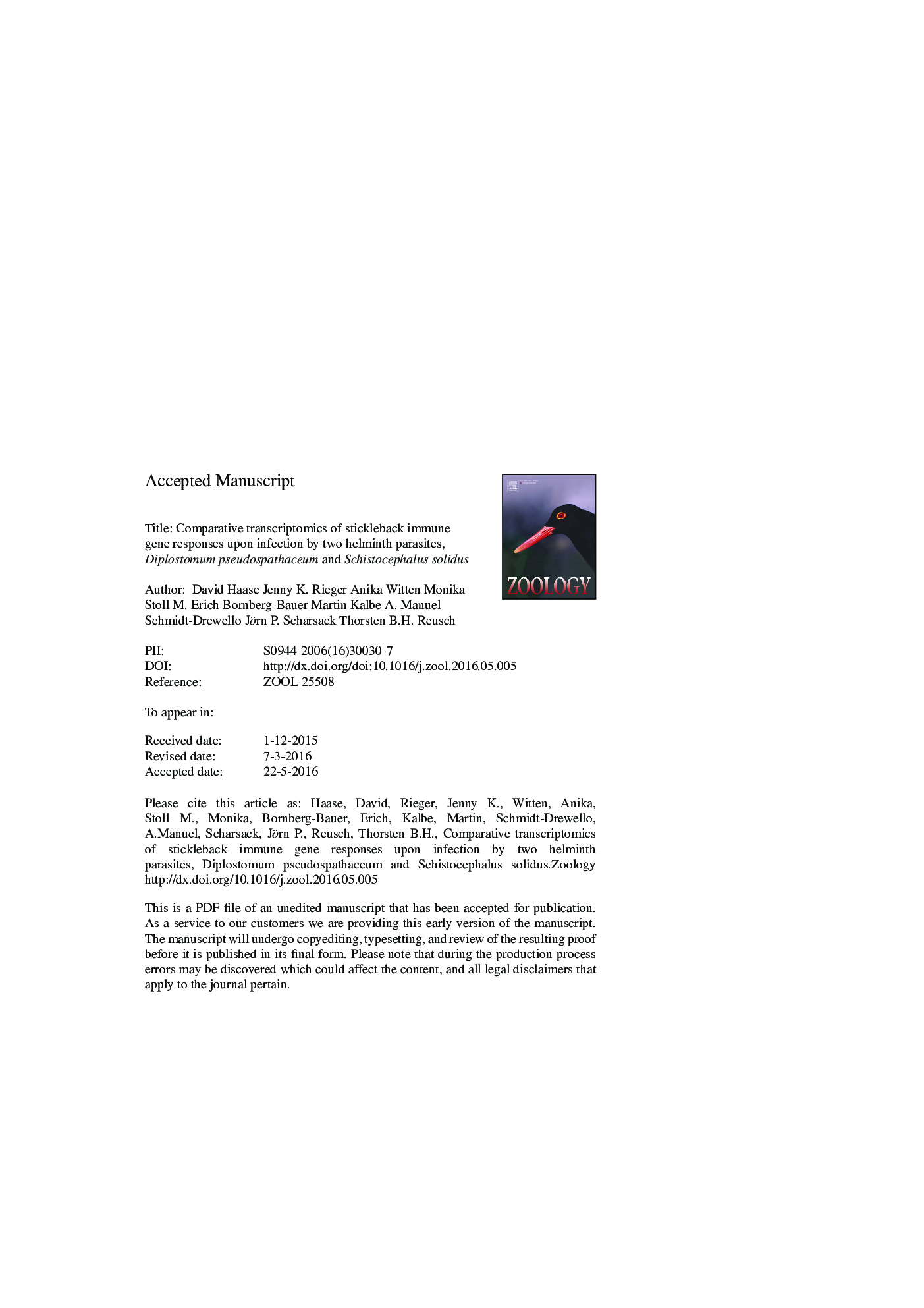| Article ID | Journal | Published Year | Pages | File Type |
|---|---|---|---|---|
| 5586608 | Zoology | 2016 | 24 Pages |
Abstract
Immune systems of vertebrates are much more diverse than previously thought, in particular at the base of the vertebrate clade. RNA-seq was used to describe in detail the transcriptomic response of stickleback hosts to infection by two helminth parasites, the trematode Diplostomum pseudospathaceum (2 genotypes plus a genotype mix) and the cestode Schistocephalus solidus. Based on a global transcription profiling, we present immune genes that are active during chronic or multiple repeated infection. We found that the transcription profiles of D. pseudospathaceum genotypes were as divergent as those of the two parasite species. When comparing the host immune response, only 5 immune genes were consistently upregulated upon infection by both species. These genes indicated a role for enhanced toll like receptor (TLR) activity (CTSK, CYP27B1) and an associated positive regulation of macrophages (CYP27B1, THBS1) for general helminth defense. We interpret the largely differentiated gene expression response among parasite species as general redundancy of the vertebrate immune system, which was also visible in genotype-specific responses among the different D. pseudospathaceum infections. The present study provides the first evidence that IL4-mediated activation of T-helper lymphocyte cells is also important in anti-helminthic immune responses of teleost fish.
Related Topics
Life Sciences
Agricultural and Biological Sciences
Animal Science and Zoology
Authors
David Haase, Jenny K. Rieger, Anika Witten, Monika Stoll, Erich Bornberg-Bauer, Martin Kalbe, Alexander Schmidt-Drewello, Jörn P. Scharsack, Thorsten B.H. Reusch,
